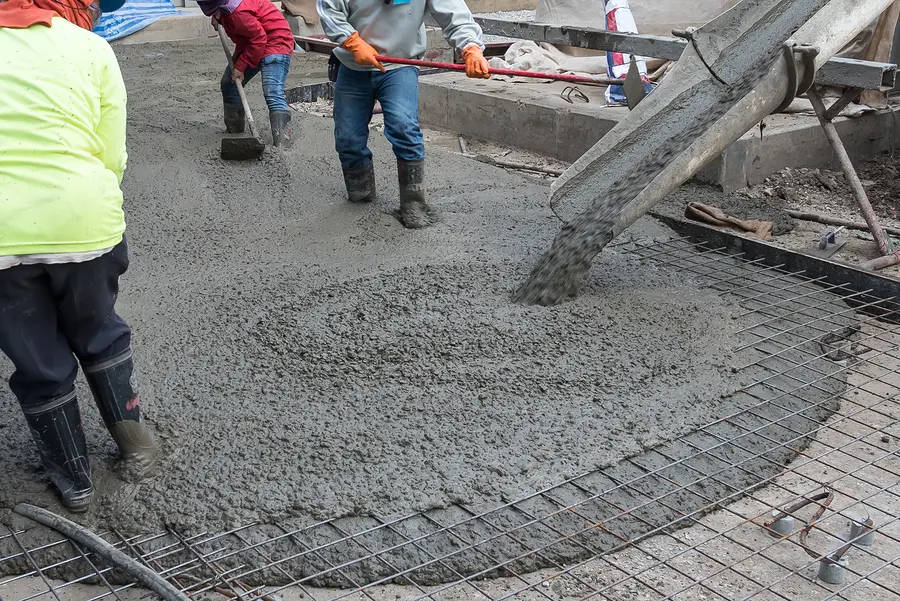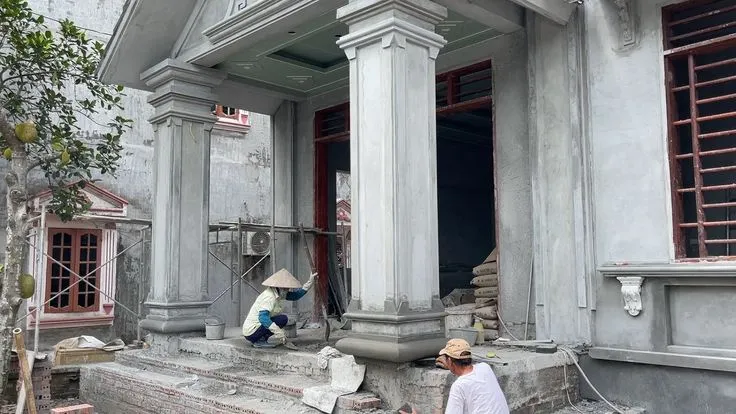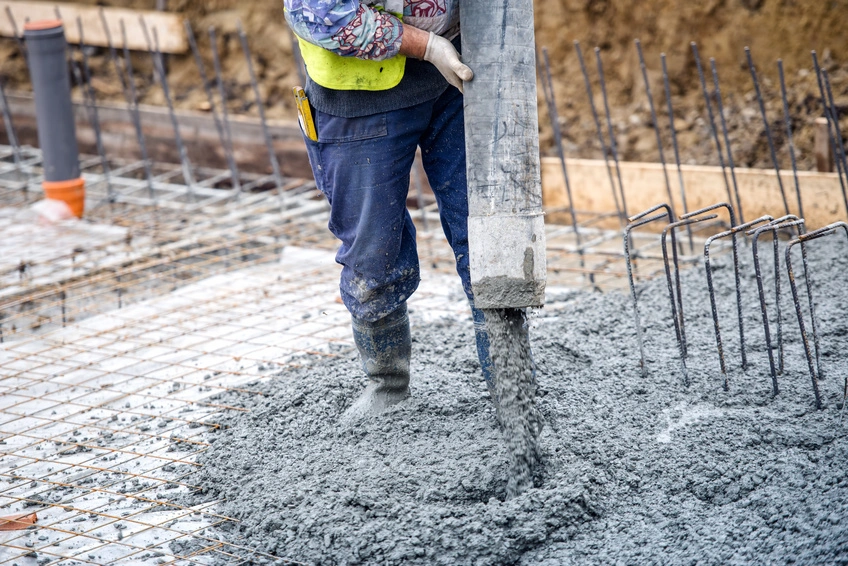Commercial Concrete Solutions: Design and Durability
Concrete is crucial in commercial construction projects, offering durability and strength for various applications. Understanding commercial concrete solutions is essential for successful project outcomes.
Commercial concrete is extensively used in buildings, pavements, and infrastructure. Its versatility allows for diverse applications, from foundations and floors to walls and decorative finishes. Because of its versatility, architects and engineers find it a better option when creating structures that need to be durable and robust.
Consider designconsiderDesign and durability to be paramount in commercial projects. Proper design ensures concrete structures meet safety standards and function effectively over time. Durability is crucial to enduring the challenges of heavy traffic and environmental elements like chemicals and weathering.
Concrete design considers load requirements, environmental conditions, and aesthetic appeal in commercial construction. Adequately designed concrete structures can enhance the visual appeal of commercial spaces while providing the necessary strength and durability.
Commercial concrete solutions play a vital role in the construction industry, offering durability, versatility, and aesthetic appeal. Understanding the importance of design and durability in commercial projects is critical to ensuring successful outcomes.

Several factors of concrete structures
Several factors influence the final design of concrete structures to ensure safety, functionality, and aesthetics. Engineers and architects working on construction projects must comprehend these factors.
Load requirements and structural considerations are primary factors in concrete design. The design must account for the expected loads the structure will bear, such as live loads from people or vehicles and dead loads from the structure itself. Structural considerations include the type of structure, its intended use, and the required strength and durability.
Environmental factors and site conditions also play a significant role. Concrete must withstand ecological conditions such as temperature fluctuations, moisture, and exposure to chemicals or pollutants. Site conditions, such as soil type and foundation requirements, can impact the design and construction process.
Aesthetic and functional requirements are essential for many projects. Concrete can be shaped, colored, and textured to meet aesthetic goals, enhancing the overall design of a structure. Functional requirements, such as acoustics and thermal insulation, may also influence the design of concrete elements.
Factors influencing concrete design are diverse and complex, requiring careful consideration to ensure the success of construction projects. By understanding load requirements, environmental factors, and aesthetic and functional requirements, engineers and architects can create concrete designs that are safe, durable, and visually appealing.
Designing commercial concrete structures involves several fundamental principles to ensure strength, durability, and aesthetic appeal. These principles encompass design, reinforcement strategies, formwork, and finishing techniques.
Mix design and proportioning are critical aspects of commercial concrete design. The mix must be carefully proportioned to achieve the desired strength and durability. Factors such as the type and size of aggregates, cement content, water-cement ratio, and admixtures are considered to create a mix that meets project requirements.
Reinforcement strategies are essential for enhancing the strength and durability of concrete structures. Reinforcing bars (rebar) are commonly used to provide tensile strength and prevent cracking. The placement and spacing of the rebar are crucial to ensure structural integrity.
Formwork shapes the concrete and provides support during the casting process. Proper formwork design and construction are crucial to achieving the right shape and polish on the concrete part.
When finished, concrete surfaces look better and are more durable. Techniques such as troweling, stamping, and polishing can create smooth, textured, or decorative finishes.
Design principles for commercial concrete involve carefully considering mix design, reinforcement strategies, formwork, and finishing techniques. Engineers and architects may follow these guidelines to design robust, long-lasting, and aesthetically pleasing concrete structures.
Durability is an essential factor to consider when building commercial concrete structures. By incorporating various innovations, concrete structures can function better and last longer.
Admixtures are commonly used in commercial concrete to improve performance. These additives can enhance properties such as workability, strength, and durability. For example, air-entraining admixtures create tiny air bubbles in the concrete, improving its resistance to freeze-thaw cycles. Waterproofing admixtures can also reduce permeability and protect against water damage.
Surface treatments are another way to enhance the durability of commercial concrete. Various coatings and sealants can be applied to concrete surfaces to improve abrasion resistance, chemical resistance, and overall durability. Additionally, these treatments can improve the concrete's look and make it more visually appealing.
Curing methods play a crucial role in ensuring optimal strength development and durability of concrete. Proper curing involves maintaining adequate moisture and temperature conditions during the early stages of concrete curing. This process allows the concrete to achieve its maximum strength and durability potential.
Commercial concrete's durability enhancements involve admixtures, surface treatments, and proper curing methods. By incorporating these enhancements, engineers and contractors can ensure that concrete structures are durable, resilient, and long-lasting.
Sustainability is a growing focus in concrete design, with practices aimed at reducing environmental impact and promoting long-term viability. Several critical sustainable practices are commonly employed in commercial concrete design.
Recycled material inclusion is a significant sustainable approach. Materials replacing conventional concrete components include fly ash, slag, and recycled aggregates. This helps to divert trash from landfills and lowers the need for virgin materials.
Energy-efficient production methods are also crucial in sustainable concrete design. Utilizing renewable energy sources, streamlining production procedures, and cutting waste can all help reduce the environmental impact of the energy-intensive concrete industry.
Long-term maintenance considerations are crucial for sustainability. Designing concrete structures for ease of maintenance and longevity can reduce the need for frequent repairs and replacements, which can be resource-intensive and costly.
Sustainable practices in concrete design focus on reducing environmental impact and promoting long-term viability. By incorporating recycled materials, employing energy-efficient production methods, and considering long-term maintenance needs, engineers and architects can create concrete structures that are both environmentally friendly and economically sustainable.
Case studies of successful commercial concrete projects highlight innovative design solutions and demonstrate long-lasting durability in real-world applications. They showcase the versatility and durability of concrete in various commercial settings.
One example is Dubai's tallest structure, the Burj Khalifa. Its innovative design incorporates a high-strength concrete mix and a unique structural system that efficiently supports its height. The Burj Khalifa is a testament to concrete's durability and structural integrity in high-rise construction.
Another example is the Hoover Dam in the United States, a monumental concrete structure that has stood since the 1930s. Despite being exposed to extreme weather conditions and heavy loads, the Hoover Dam remains a functional and durable infrastructure, highlighting the long-lasting durability of concrete in large-scale projects.
Case studies of successful commercial concrete projects exemplify the innovative design solutions and long-lasting durability achievable with concrete. These illustrations show how concrete can satisfy the intricate requirements of contemporary commercial buildings and provide inspiration for similar projects in the future.
Commercial concrete design faces various challenges, including common issues such as cracking and spalling. These challenges can compromise concrete structures' durability and integrity if not addressed effectively.
Cracking is typical in concrete due to shrinkage, temperature changes, and loading conditions. To mitigate cracking, engineers use strategies such as incorporating control joints to direct where cracks occur, using proper concrete mix designs with adequate reinforcement, and ensuring proper curing practices.
Spalling, or breaking off concrete surfaces, can occur due to freeze-thaw cycles, chemical exposure, and poor construction practices. To prevent spalling, designers may specify air-entrained concrete to improve freeze-thaw resistance, use protective coatings or sealants to reduce chemical exposure and ensure proper construction techniques are followed.
Overall, challenges in commercial concrete design can be addressed through careful consideration of factors such as concrete mix design, reinforcement strategies, and construction practices. By implementing appropriate strategies, engineers and architects can mitigate durability problems and ensure the long-term performance of concrete structures.
FAQs
1. What essential aspects of commercial concrete design should be considered?
Critical factors in commercial concrete design include load requirements, environmental conditions, and aesthetic and functional requirements. These factors influence the mix of design, reinforcement strategies, formwork, and finishing techniques used in the project.
2. How can admixtures enhance the durability of commercial concrete?
Admixtures can enhance the durability of commercial concrete by improving its performance characteristics, such as workability, strength, and durability. For example, air-entraining admixtures can improve freeze-thaw resistance, while waterproofing admixtures can reduce permeability and protect against water damage.
3. What sustainable practices can be incorporated into concrete design?
Sustainable practices in concrete design include incorporating recycled materials, using energy-efficient production methods, and considering long-term maintenance needs. These practices help reduce environmental impact and promote long-term viability.
4. What are some common challenges in commercial concrete design?
Common challenges in commercial concrete design include cracking, spalling, and durability issues. Proper mix design, reinforcement strategies, and construction practices can mitigate these challenges.
5. Can you provide examples of successful commercial concrete projects?
SuccessfulExamples of successful commercial concrete projects include the Burj Khalifa in Dubai and the Hoover Dam in the United States. These projects showcase innovative design solutions and demonstrate concrete's long-lasting durability in real-world applications.
Conclusion
In conclusion, commercial concrete design encompasses a range of considerations, from mix design and reinforcement strategies to sustainability practices and durability enhancements. By understanding commercial concrete design's key factors and challenges, engineers and architects can create robust, durable, environmentally friendly, and visually appealing structures.
Contact us today to learn more about commercial concrete design and how it can benefit your next construction project. For your business needs, our team of experts is prepared to help you create creative and long-lasting concrete solutions. Together, we can use concrete to create a better future.




